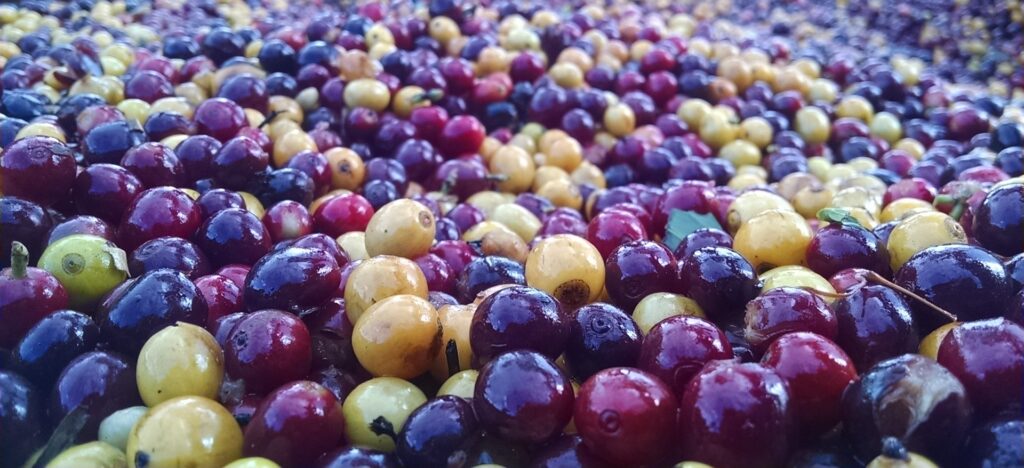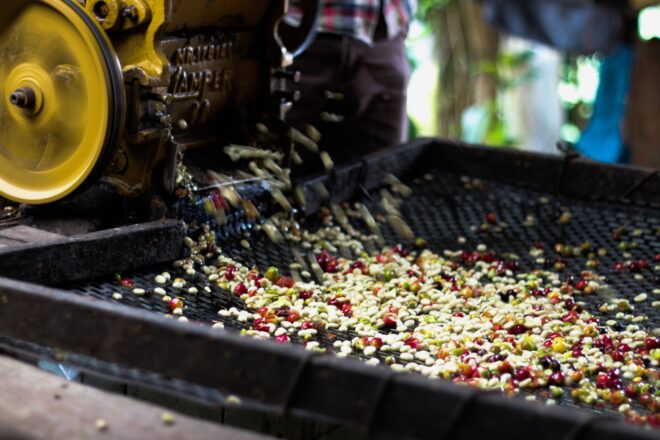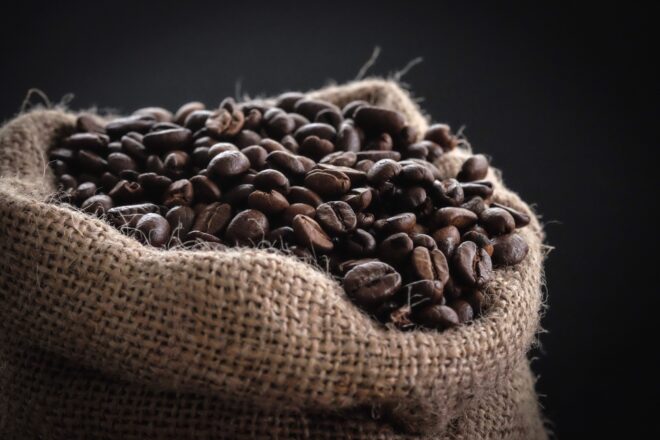- December 18, 2021
- 2:43 pm
Most people directly pour their store-bought coffee into their filter every morning and brew up a pot of wake up juice lazily to get their day started. But you are not the same. You chose to open your eyes to the world of coffee. So, you can experience the art of growing and brewing coffee. You can experience a level of enjoyment in drinking coffee that only selected few will ever have.
After spending a little time learning about coffee, you will find that there are various ways of preparing the coffee long before it is poured into the bag for you to take home. In many different ways in which coffee is prepared, two of the main preparations are washed and unwashed coffee. Both of these methods bring its own strengths and weaknesses to your cup of coffee, and it can significantly impact the flavour of the coffee before it reaches your French press or drip coffee maker.
The Difference Between Washed and Unwashed Coffee
Firstly, it is essential to understand what the coffee beans are and how are they prepared. Knowing even a little about the process can help you realise why some coffee tastes differently from the others and can help in predicting the taste of coffee around the world.
To the contrary of the belief of the most, coffee is a fruit and not bean. The coffee cherry is a red or yellow fruit containing two seeds enclosed by a soft layer of mucilage and a thin skin called “parchment”. The first step in processing coffee is harvesting cherry from the plant. Once harvested, the bean must be segregated from the cherry without losing the aroma contained within the mucilage.

Washed Coffee
The process of making washed coffee is known as the “wet process”. In this process, the coffee cherry is pulped by a pulper. While pulping, the outer layer of skin is removed. Once the outer layer has been removed, bean with mucilage is fermented in water for one to two days (at least). The bean is washed after the fermentation process, eliminating the mucilage after it releases its aroma.
This method produces the most superior quality coffee amongst all the coffee processing methods. However, preparing the washed coffee requires lots of skill and water to get the perfect outcome. Some of the world’s most fine and often most expensive coffees are made using this process.
Unwashed Coffee
The method of preparing unwashed coffee is referred to as “natural coffee processing” or the “dry process”. This is the oldest coffee preparation method which has been in use for centuries. In this process, the coffee cherries are first washed and then dried in the sun. Once the cherries are dry, the green seed is expelled from the dried, fermented cherry.
While producing coffee using this method, the removal of green seed is the most challenging task. However, this process still doesn’t demand as much skill as required in the washed process; meaning it is a much easier process and hence, it is widely used by the coffee producers globally.
Semi-washed Coffee
The aspects of both – washed and unwashed methods are coupled using the semi-washed method. In this process, the outer skins are removed; however, the pulp is allowed to remain, and then the remains are dried in the sun. After the drying process is complete, the pulp remains wet, and then the beans are extracted just like in the dry process.

Flavour Differences
Like the process of preparing your coffee affects – how your coffee will taste, similarly how the coffee beans are prepared before roasting and brewing is the most significant contributing factor to the flavour of your everyday coffee. You might be amazed by the difference in taste when you try coffee processed using washed and unwashed methods. Every coffee producer will undoubtedly claim their approach to be the best. However, both the methods bring an incredible variety to the coffee we pour for ourselves every morning.
Washed Method
Relatively, this is a new process of preparing coffee when looking at the long history of the human love for coffee. This process often creates much cleaner and brighter beans which taste much fruitier than the outcome of the unwashed method. If you need your coffee to be a little more on the acidic side, finding beans prepared using the washed method is ideal for you.
Unwashed Method
The unwashed method, which is also known as the dry-process, results in a coffee that is heavy in body but remains sweet, smooth and sophisticated. Many countries, having a dry climate, such as Indonesia, Ethiopia and Brazil use this method. These countries have plenty of heat to ensure that the beans are adequately dried compared to other regions.
Semi-Washed Method
The general consensus is the washed method produces an acidic coffee with enhanced clarity, while the unwashed method produces a bolder coffee with more body and increased complexity. Beans processed using the semi-washed process combines the best of both, often giving bolder coffee with increased acidity as compared to the other methods.

In the end, it all comes down everyone’s personal taste. Both – washed and unwashed methods can result in an astounding coffee bean that provides enough body and flavour to impress even the most critical of coffee aficionados. But, like every other thing in life, not everyone will agree to the same. Some will prefer the fruitier tastes that the washed method brings while others will enjoy the sweeter full body coffees created by the unwashed method.
While these two different processes are quite distinct from one another, there is one thing they have in common, and that is not the coffee beans. Both of these preparations will create a truly unique and wondrous coffee experience that delighting your taste buds and keeping you coming back for more. If you wish to make the best tasting coffee using these methods, you should get out there and experiment. Try coffee made using both methods and discover which delights your taste buds or causes you to have a sour face when you take a drink. You may determine that you prefer one approach over the other, or you may even enjoy both and be capable of appreciating the subtle differences each preparation offers to your coffee mug.

